Many businesses, big and large, took a hit in 2020. Some businesses either adapted or emerged to fill a gap in the market (toilet paper manufacturers and hand sanitiser suppliers spring to mind). Other businesses were already placed to benefit from pandemic associated restrictions with many online stores enjoying record sales. Regardless of how 2020 was for you and your business, last year was certainly an opportunity for all business owners to take stock and assess what was and what wasn’t working and how to best adapt to the changing market and economic climate.
A major change across many businesses, from small right up to large corporations, has been the closure of offices due to coronavirus. Suddenly employees were being sent off to set up their own office and work from home. And despite the fact that for most states in Australia ‘lock down’ was only in effect for 8 weeks, many employees have continued to work remotely for months, with the trend tipped to continue well into the future.

Employees who have put their hands up to work from home are enjoying the break from commuting with more time in their mornings and evenings to dedicate to personal hobbies, fitness or time with their kids (including being able to do school drop offs and picks ups).
Considerations and tips to managing this new working paradigm
Review Expenditure
There has never been a better time to review operational costs of your office and workforce with such big changes being implemented. You may be able to reduce rent by moving into a smaller office space as well as reducing general office expenditure due to having fewer staff on site. Assess which costs can be reduced or eliminated all together now that the office is either dormant or running with a skeleton staff.
Tax deductions
For those running a business remotely or for staff working from home there will be various eligible tax deductions applicable. Anything relating to running a home office such as heating, cooling, phone and internet expenses as well as office supplies, office furniture and electronics. You and your staff will need to keep records and evidence of usage to justify your claims. You can find our more tax deductions for employees working from home here. For business owners if home is your principal place of business you can read up on ATO recommendations here.
Structured Work Day
Daily schedules with structured desk hours will help remote workers have a sense of order and consistency to allow flow and productivity. A list of tasks will assist employees and employers manage work expectations and achieve efficiency. Allowing some flexibility regarding hours worked will enable staff to work around their family and personal commitments and help to ensure a happy and hardworking workforce.
Encourage staff to have an area in their home dedicated to their work space (away from living areas if possible). Working a structured day will help help home based staff to set clear boundaries for themselves to know when to step away from the desk and to ‘go home’. Stress the importance of separating ‘working from home’ and ‘home life’ to ensure a healthy work life balance is maintained.

Connection, Comradely and Compassion
Weekly group Zoom meetings, monthly team face to face catch ups and continued, regular social gatherings are essential to ensure morale is high and office relationships continue to be nurtured in this new working era. Connection is key to maintaining happy and inspired staff. Supporting the mental health and wellbeing of yourself and your staff is essential as everyone adjusts to a new way of life during these changing times. Check ins with staff with one on one meetings (be it via zoom or over the phone) also helps your staff to feel valued, informed and in the loop.
Systems and Safety
Having an organised and inspiring office will be paramount to productivity (for yourself and any staff you may have) as well as reducing hazards. Everything needs to have its place – from pens to paperwork. It makes tidying up a breeze and finding things simple. Sort paperwork into folders for easy access and less chaos. A clear desk equals a clear mind so aim for clear surfaces and uncluttered storage. Invite staff to share their own personal tips to setting up a tidy and inspiring workspace - perhaps each week someone new can share tips and tricks including photos or ideas that have worked for them.
In addition to a well organised office, occupation health and safety laws require all work spaces, remote or otherwise, meet OHS standards. In order to comply, a home office needs a desk and chair which supports good posture as well as a space free of tripping or electrical hazards and a place conducive for work (ie, somewhere quiet and well lit). As an employer you will need to ask for written confirmation that your staff have a safe and fit to purpose work station, ideally through a checklist or questionnaire and signature from the employee. The good news is staff can usually claim any home office furniture or equipment needed to create a productive and safe workspace as a tax deduction.
As health and wellness becomes a key focus due to the pandemic, finding and maintaining a healthy work life balance is essential. A flexible work arrangement can often allow more time for self care, fitness, quality time with family and friends and lower levels of stress. For many people the work from home scenario may just be the key to juggling the demands of their work and personal lives. A healthy work life balance can improve productivity and boost overall performance as well as reduce mistakes, burn out, overwhelm and sick days. A win win for everyone.

Alison Gallagher is a freelance writer, resourcefulness expert and entrepreneur. She has been featured in various publications including Stellar Magazine, Australian Health and Fitness Magazine, and Cleo Magazine. Alison is particularly passionate about sharing practical tips on how to live simply, sustainably and seasonally.






